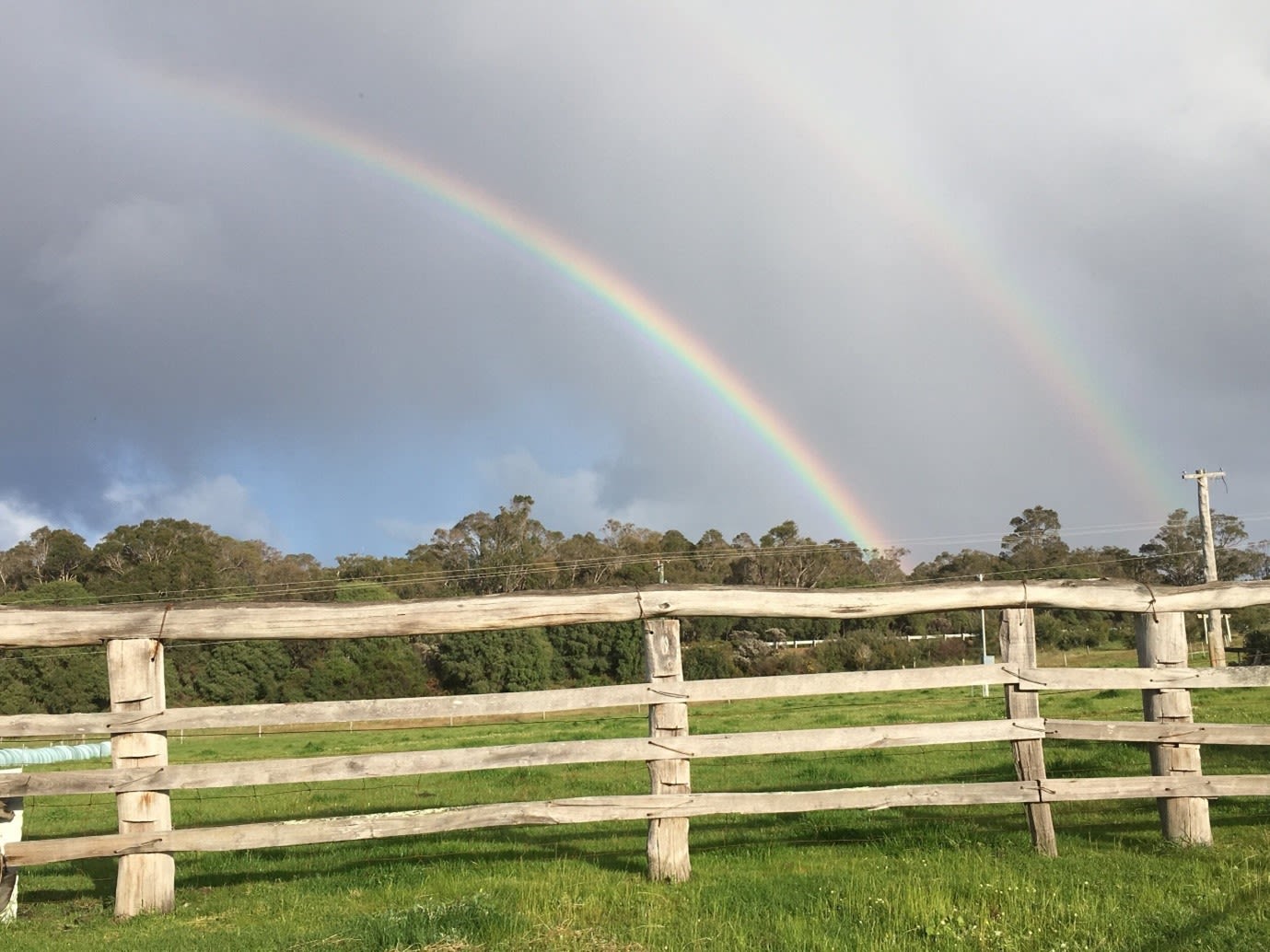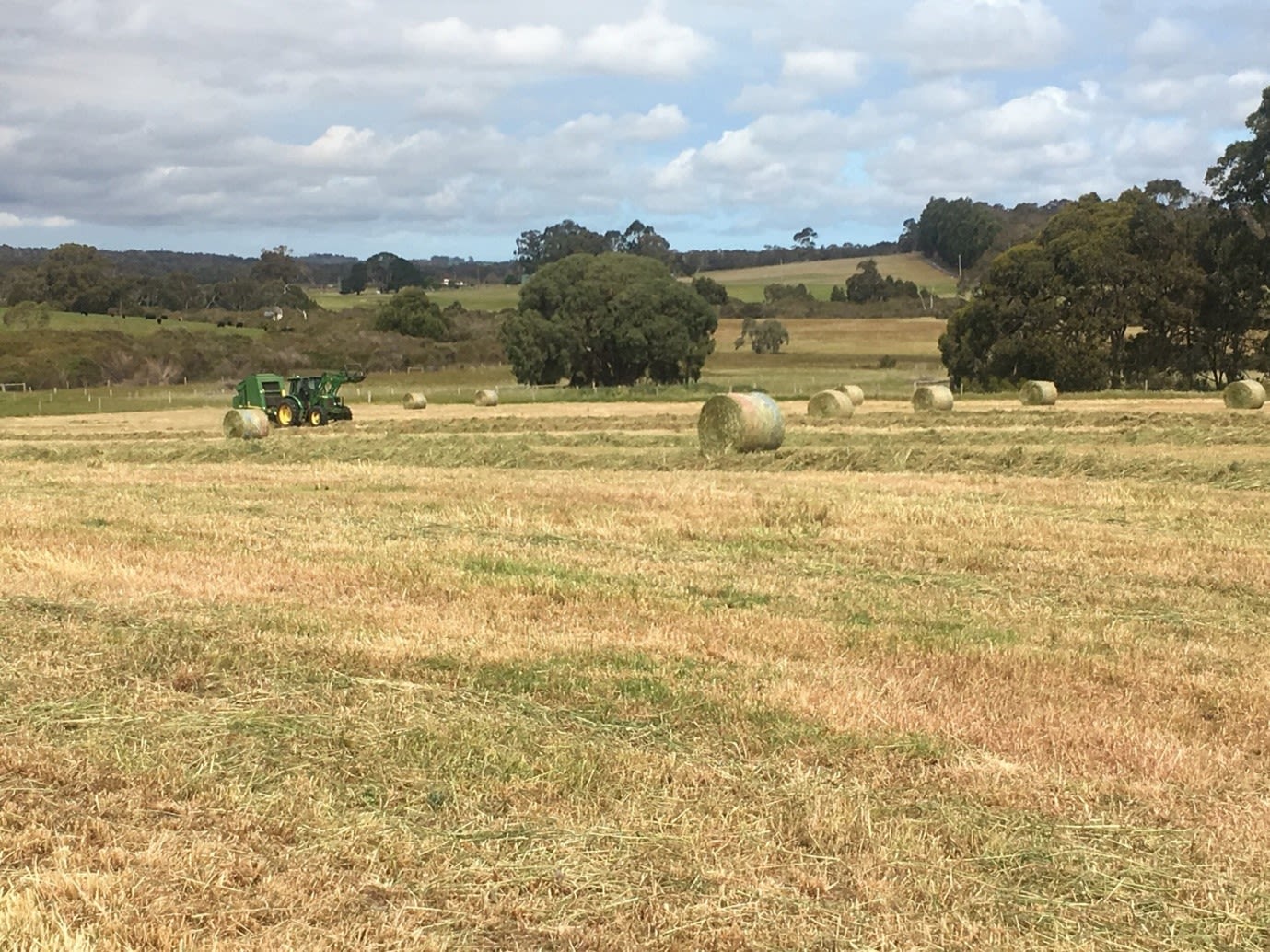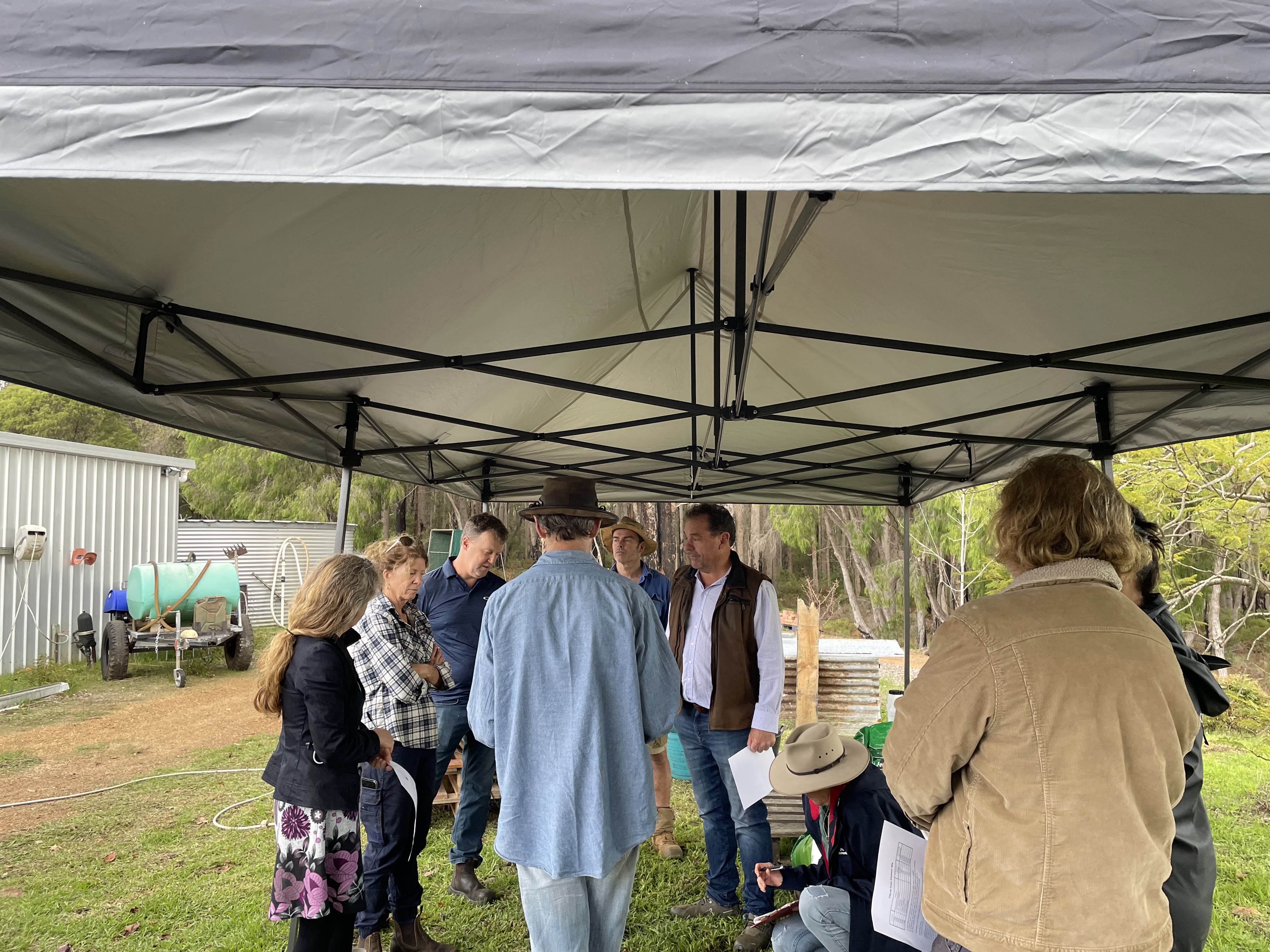Case Study: Regenerative Agriculture in Practice
Crystal Springs - Forest Grove, WA

Fact File:
Property Location: Forest Grove, Western Australia
Property Use: Commercial Beef Farm, Cows and Calf
Landholders: Deborah Orr & Ben James-Ross
Size: 20.24 hectares
Climate: Mediterranean
Average Rainfall: 1000mm
Project: Regenerative Agriculture in Practice Program (RAPP)
The farm Maremma inspecting the hay crop for readiness!
The farm Maremma inspecting the hay crop for readiness!
Making Haylage
Making Haylage
Background:
Deborah and Ben started farming 9 years ago when they purchased Crystal Springs. For Deborah in particular, farming was always a lifelong dream.
“As a teenager I dreamt of being a farmer but I was discouraged by my school career officer, well, it took a long time but here I am. I couldn’t be happier that Ben and I have this opportunity to work on the land.”
Deborah had had some exposure to farming before taking the leap having done some short stint holiday work on a dairy farms, working in a shearing shed, and even a bit of cattle droving. The decision to go with cattle was never really an active choice, it just kind of happened. The inspiration came from farmer friends, whom Deborah was working for at the time
“I was talking to them about cattle, I was learning about cattle, and I just got the confidence from them working with them, right now’s the time, I’ve got to do it.”
Fortunately Ben felt the same way as Deborah, and is very happy with the decision - they freely admit that they still have so much to learn however if you pay attention every day brings a new lesson.
Initially, accessing knowledge was a big challenge for Deborah & Ben, but Deborah has been a part of the Regenerative Agriculture in Practice Program (RAPP) for the last 4 years and found that was helpful to get her in contact with like minded people.
Landscape:
The property sits on just over 20 hectares of picturesque, undulating land with an elevation of 78m above sea level and an average annual rainfall of 1000 mm. One feature of the property is a natural spring giving rise to the name Crystal Springs.
The previous owner had cleared the land, but prior to clearing the landscape would have consisted of what is now classified as tall to medium forest & woodland. Jarrah, Blackbutt, Marri & Karri trees would have been present in large numbers in the landscape. The cleared areas were used for sheep, cattle and hay production.
The property’s soil ranges from grit sand to karri loam with a pH from 5.5 to 6.0 across the farm. The pasture species across the majority of paddocks are currently a mix of mostly annual rye grasses, clovers. When Deborah & Ben bought the land the soil test results showed the land wasn't in terrible condition, but they did need to apply lime and fertilisers, based on the initial soil tests that they ran. Deborah says that those early tests then were fairly limited, and since then they have been part of the Whole Farm Soil Testing Program through the LCDC which provides more extensive test results.
“The pastures are showing significant improvement after mineralisation and regenerative management practices.”
Sunset at Crystal Springs
Sunset at Crystal Springs
Black Angus Calf enjoying the pasture
Black Angus Calf enjoying the pasture
Production:
Deborah & Ben currently run a small cattle, cow and calf, operation. Deborah says that the size of their property determines their maximum herd size, however they are happy to keep things small.
They were given advice to start with good breeding genetics and each year introduce a bull to the herd. Their numbers remain easily manageable, as their relative land mass is small and they don’t want to over-graze. Deborah & Ben like it that way, and they have an attachment to the animals which are gentle and quite, and handled easily using low-stress stock handling.
To manage the summer feed gap the calves are weaned in December, which has the additional benefit of reducing the cow's intake requirements. Deborah and Ben supplement feed over the autumn and winter period with their own haylage made on their lease block.
Changes to Come
Cell Grazing:
During her time as a part of RAPP, Deborah has learned from a number of Grazing Trainers, and implemented aspects from both Dr Judi Earl's and Dick Richardson's approaches to Grazing Management.
Deborah now plans her grazing cycles at least a week ahead. She finds that it's dependent on her off-farm working schedule; being on farm means she can have smaller cells and daily moves allowing for quicker regrowth of pasture, if she is working they use slightly larger cells and less frequent moves which still allows for a more optimal feed uptake for the cattle, as well as quicker regrowth for the pasture when compared to set stock grazing.
“... it's all subject to what the season gives us. We are still in an annual-dominant system and are not going to graze just once in the growing season - and this year has been a particularly good season for grass growth...”
They are both also very conscious of not over grazing, and would rather slightly under graze, it’s definitely a learning curve for them & every paddock is different with observation being key to understanding what is working and what is not.
Cell Grazing at Crystal Springs
Cell Grazing at Crystal Springs
Spring Foliars workshop 2024
Spring Foliars workshop 2024
Biostimulants and Foliar Sprays
Deborah and Ben have started to make their own biostimulants and foliar sprays, which they are particularly excited about. Throughout Deborah's time in RAPP , program coach Mark Tupman has taken the group through how to prepare their own Bioferments and Biofertilisers. Ultimately, Deborah and Ben would like to use these on their farm to try and off set their use of synthetic fertilisers.
“We would like to mainly use foliar sprays to manage pastures, and to help boost the soil biology and health. In winter, we have got very active dung beetles, which we are very happy about. In summer, there are summer dung beetles around our farm , but the winter ones have definitely noticeable increased over the years!”
Motivation & Challenges
Deborah and Ben’s motivation stems from a desire to look after their soil, to them that is a major factor. Since being a part of RAPP, they understand more about the seasonality of farming, and how they need to be looking at many factors at once. They are now looking at: above-the-ground pasture growth, year-round soil cover, increasing their seed drop, cell grazing management; as well as the effect all this has on livestock health, how it may impact the ecosystem and reaping the most benefits from their actions. They have a thirst for more knowledge and new and better techniques and maintaining contact with like minded people.
“Farming with nature is what’s important. Treating the land as gently and as naturally as is practical; avoiding use of chemicals and using low-stress stock handling techniques. We just feel we are caretaking this land, it's not ownership.”
Deborah and Ben would love to have more diversity on their farm, both above and below ground. Perennial pasture is something they would love to achieve but given the size of their property, it is a challenge as they don't feasibly have a paddock that they can sacrifice (not graze) to let the perennials establish for a year. However they are using multispecies as a way to bring in more diversity on their farm. With this comes their desire to have improved soil health and it's subsequent benefits of improve nutrition and livestock health, pasture production capacity, soil organic carbon, water holding capacity, and much much more.
Deborah says that knowledge, or lack of, is the biggest challenge for new farmers - the LCDC Talkin After Hours workshops & webinars have been a big help as they have provided short and practical bites of information that have got them thinking.
“I would like to leave this farm with the soil just bubbling & jam packed with life. I’d like the pastures to remain green & appetising well into the summer months - it would be so exciting to see that. For nature to blossom, for everything to be so alive, the bird life, the insect life, I just think that would be ideal & I believe it is achievable.”
RAPP 2024 Group Peer Group session
RAPP 2024 Group Peer Group session
RAPP Peer Group session reviewing a multispecies pasture left to stockpile
RAPP Peer Group session reviewing a multispecies pasture left to stockpile
Crystal Springs Farm
Crystal Springs Farm
About this Case Study
This case study forms part of the Lower Blackwood LCDC's project 'Regenerative Agriculture in Practice Program (RAPP) 2024, and is supported through the Shire of Augusta Margaret River Environmental Management Fund and Soil Wise. Soil Wise is funded by the National Landcare Program Smart Farms Small Grants – an Australian Government initiative. It is supported by Healthy Estuaries WA – a State Government program.















